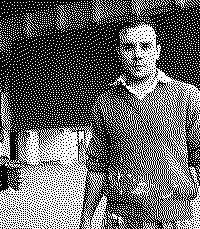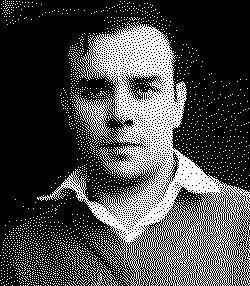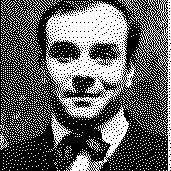Artists/Yves Klein
Fast Facts
International Klein Blue (IKB)
Klein is perhaps best known for developing a unique shade of blue, which he registered as International Klein Blue (IKB). This deep, ultramarine blue became a central element in many of his artworks, symbolizing the sky and the sea, and exploring concepts of the infinite and the void.
Monochrome Paintings
He created numerous monochrome paintings, particularly in his signature IKB, focusing on the purity of color and its effects on the viewer. These monochromatic canvase
Anthropometries
In his Anthropometries series, Klein used the human body as a 'living brush', directing nude models covered in IKB paint to press themselves against canvases, creating direct imprints of their bodies.
Immaterial Art
Klein was fascinated with the concept of the immaterial. He sought to capture the immaterial aspects of art and even sold 'zones of immaterial pictorial sensibility' in exchange for gold, which he would later throw into the Seine River.
Performance Art
He was a pioneer of performance art, with his Anthropometries and other public performances merging art, spectacle, and ritual in groundbreaking ways.
Influential in Nouveau Réalisme
Klein was a leading figure in the Nouveau Réalisme movement in France, which sought new ways of conceptualizing the real in art, often through the use of unconventional materials and methods.
Books and Writings
In addition to his visual art, LeWitt wrote extensively, including his famous "Paragraphs on Conceptual Art" (1967), which helped define the Conceptual art movement.
Biography



Yves Klein, born on April 28, 1928, in Nice, France, emerged as a pivotal figure in post-war European art, particularly known for his innovations that prefigured developments in performance art, minimal art, and conceptual art.
Coming from an artistic family, Klein's upbringing was steeped in creativity, though he received no formal artistic training. His mother, Marie Raymond, was a prominent figure in the Art Informel movement, while his father, Fred Klein, was a Post-Impressionist painter. Klein's early explorations in the art world were profoundly influenced by his time in Japan, where he became a judo master, a discipline that significantly impacted his approach to art.
Klein's artistic journey is notable for his unique engagement with monochrome, especially through his use of International Klein Blue (IKB), a vibrant ultramarine which became his signature. He delved into the realms of the monochrome, creating immersive experiences that challenged the viewer's perceptions and sought to transcend the materiality of paint. His exhibitions, such as the publication of Yves Peintures and the groundbreaking Proposition Monochrome; Blue Epoch, underscored his commitment to the idea that a single color could encapsulate vast emotional and spiritual depths.
Perhaps one of Klein's most audacious moves was his exhibition Le Vide (The Void), where he presented an empty gallery, asserting the space itself as a work of art and inviting contemplation on the immaterial and the infinite. This act highlighted his interest in Zen Buddhism and the metaphysical, themes that pervaded much of his work.
Klein's Anthropométries series marked a significant phase in his career, where he used naked female models as "living brushes" to apply paint to canvas, emphasizing the body's imprint as a means of artistic expression. These performances blurred the lines between artist, artwork, and audience, embedding a sense of immediacy and corporeality into the work.
Despite his relatively short career, ending with his untimely death on June 6, 1962, Klein's work has had a lasting impact on various art movements, including Nouveau Réalisme, of which he was a founding member. His explorations into the immaterial, the monochrome, and the performative aspects of art making have inspired generations of artists to push the boundaries of their mediums and concepts (Wikipedia) (Encyclopedia Britannica) (The Art Story).
Importance
Yves Klein's significance in the art world is multidimensional, reflecting his innovative approaches, profound influence on subsequent art movements, and his unique philosophical insights:
Innovative Use of Monochrome and Color
Klein revolutionized the use of color in art, particularly through his signature International Klein Blue (IKB), which transcended traditional aesthetic boundaries. His monochromatic paintings were not merely visual objects but invitations into immersive sensory and emotional experiences, emphasizing the depth and vastness of a single hue (The Art Story).
Pioneering Performance Art:
Klein's work in performance art, particularly his Anthropométries series, where he used naked female bodies as 'living brushes' to apply paint on canvases, marked a significant departure from traditional painting techniques. These performances highlighted the human body's role in creating art, challenging existing notions of the artist's touch and the creative process (The Art Story).
Conceptual Art and the Immaterial
Klein's conceptual ventures, particularly his Immaterials, pushed the boundaries of art into the realm of the conceptual, where the idea behind an artwork became as significant, if not more, than its physical manifestation. This exploration of the immaterial laid the groundwork for much conceptual art that followed in the 1960s and 70s (Artsy).
Integration of Spirituality and Philosophy
His engagement with Eastern philosophies, Zen Buddhism, and Rosicrucianism deeply influenced his artistic output, integrating spiritual and philosophical dimensions into his work. Klein's Monotone-Silence Symphony, for example, embodied his interest in Zen Buddhism's tenets, creating spaces for communal meditation and introspection through prolonged silence (Artsy) (Encyclopedia Britannica).
Interdisciplinary Approach
Klein's work transcended traditional art forms, incorporating elements from music, performance, and spirituality. His holistic approach to art-making broke down the barriers between different artistic and intellectual disciplines, paving the way for future artists to explore the intersections between art, science, and spirituality (Encyclopedia Britannica).
Influence on Future Art Movements
As a founding member of the Nouveau Réalisme movement, Klein's radical techniques and conceptual gestures significantly influenced the development of Minimalism, Conceptual Art, and Performance Art. His bold explorations and revolutionary ideas continue to inspire artists, curators, and theorists (Encyclopedia Britannica).
Technique
Yves Klein is renowned for his inventive techniques that significantly influenced the trajectory of modern and contemporary art.
Monochrome Paintings
Klein's exploration into monochrome started early in his career, experimenting with single-color canvases to evoke deep emotional and spiritual responses. His monochrome paintings were not limited to International Klein Blue but included a spectrum of colors before he settled on blue as his signature (www.wikiart.org).
International Klein Blue (IKB)
Perhaps his most famous invention, IKB is a unique ultramarine pigment that Klein developed and used in his monochrome paintings. This deep blue, suspended in a synthetic resin, maintained the luminosity and richness of the pigment, which Klein believed could evoke the immensity of the sky and sea. The technique and the specific color became synonymous with Klein's artistic identity (The Art Story) (www.wikiart.org).
Anthropometries
In these performances, Klein used nude female models as "living brushes" to apply IKB onto canvases, often in the presence of an audience. This process not only challenged traditional painting methods but also blended elements of performance art, creating a dynamic interaction between the artist, the models, and the audience (The Art Story).
Fire Paintings
Klein also experimented with fire, using a blowtorch to scorch patterns onto canvases or cardboard coated with fire-resistant materials. These works explored the themes of creation and destruction, further expanding the boundaries of painting and sculpture (www.wikiart.org).
Air Architecture
Reflecting his interest in spirituality and the immaterial, Klein envisioned architecture and sculptures made of air, proposing an art form that was entirely devoid of physical substance. This conceptual approach highlighted his fascination with the void and the invisible (Encyclopedia Britannica).
The Void (Le Vide)
This exhibition featured an empty gallery, save for a single, empty cabinet. Klein's intent was to focus on the space itself as the artwork, inviting viewers to engage with the immaterial and the infinite. It was a radical statement on the essence of art and the experience of the viewer (The Art Story).










